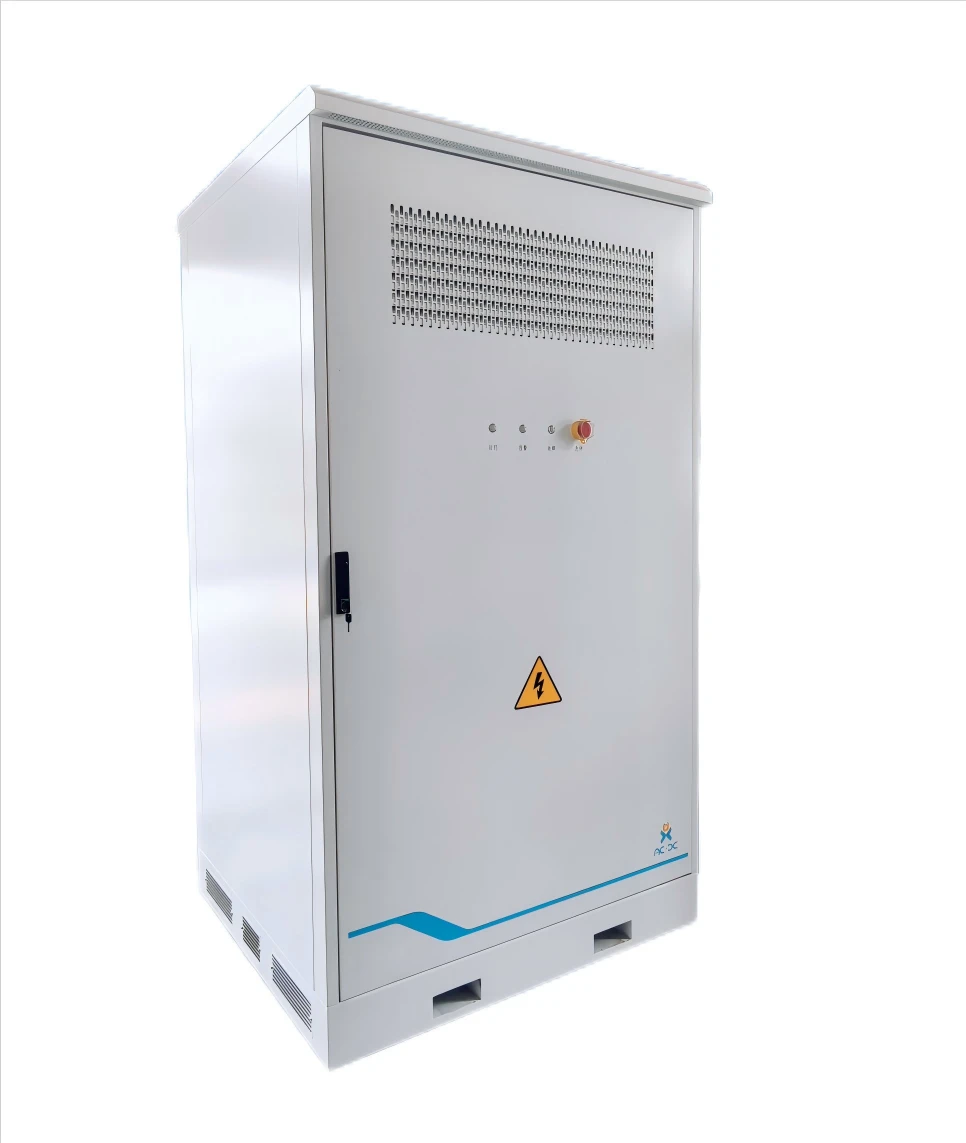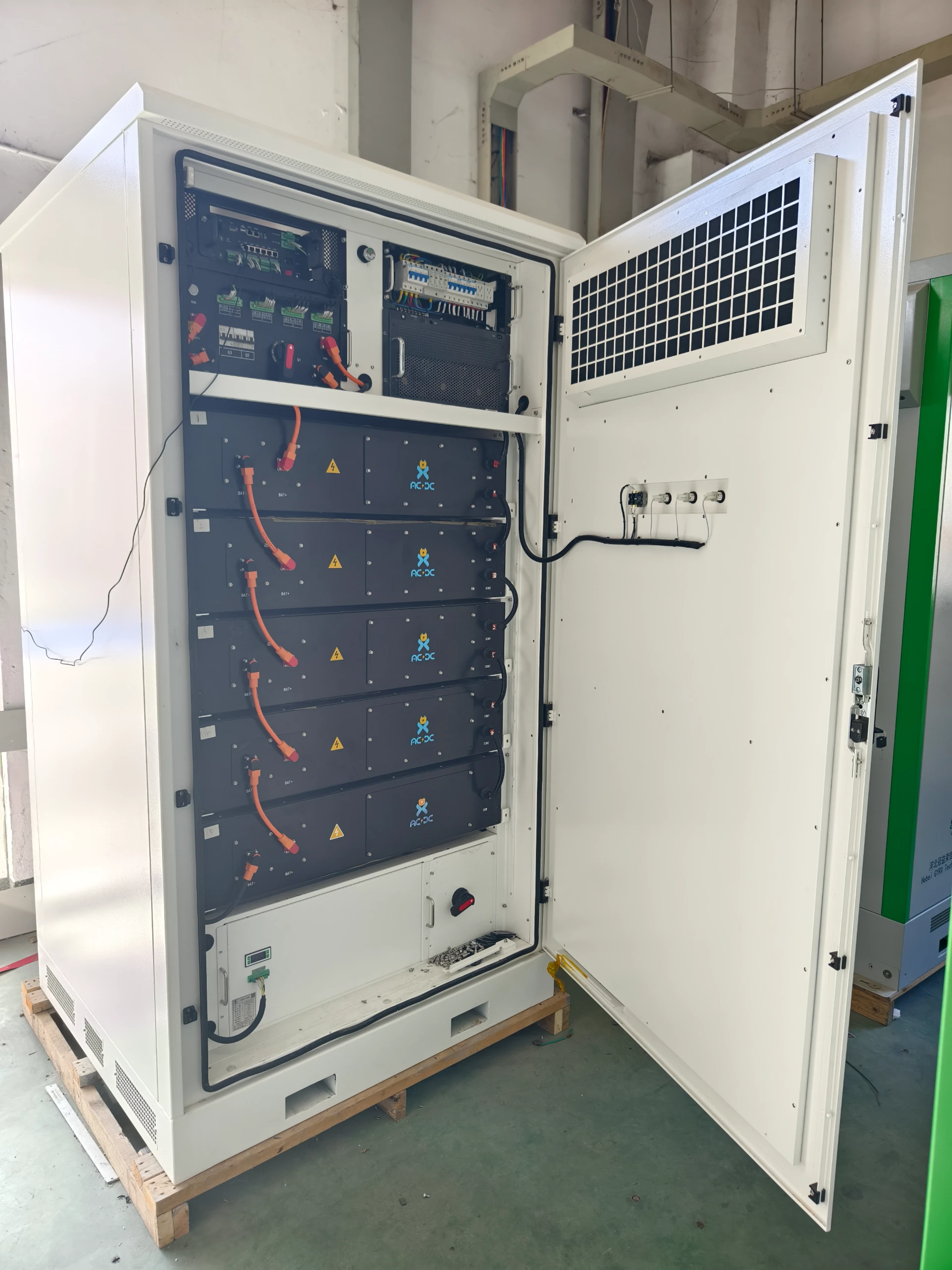
aug . 26, 2025 01:20 Back to list
High-Performance Energy Storage Systems | OEM & ESS Solutions
Driving the Future of Energy: Understanding Advanced Energy Storage Systems
The global energy landscape is undergoing a profound transformation, driven by the urgent need for sustainable solutions and enhanced grid resilience. At the heart of this evolution lies the energy storage system (ESS). These sophisticated technologies are indispensable for integrating intermittent renewable energy sources, stabilizing grids, and ensuring reliable power supply for diverse industrial and commercial applications. The market for ess energy storage system solutions is experiencing exponential growth, fueled by technological advancements, supportive policies, and increasing demand for energy independence and efficiency. Projections indicate a substantial increase in installed ESS capacity globally, with a CAGR exceeding 25% over the next decade, reflecting a critical shift towards decentralized and intelligent energy infrastructures. This article delves into the intricacies of modern energy storage solutions, covering everything from their manufacturing processes and technical specifications to their multifaceted applications and the strategic advantages they offer.

Fig 1: A modular energy storage system for industrial applications.
The Advanced Manufacturing Process of Energy Storage Systems
The production of a high-performance ESS is a meticulous process, demanding precision engineering and stringent quality control at every stage. From raw material sourcing to final assembly and testing, each step is critical to ensure the longevity, efficiency, and safety of the eventual unit.
Key Stages in ESS Manufacturing:
- Material Sourcing & Cell Production: The foundation of any modern ESS, particularly lithium-ion systems, begins with high-grade raw materials for battery cell manufacturing. This includes lithium, nickel, cobalt, manganese, and graphite. Cells, predominantly Lithium Iron Phosphate (LFP) for their safety and cycle life, are produced under cleanroom conditions, involving electrode coating, electrolyte filling, and sealing processes.
- Module Assembly: Individual cells are grouped and interconnected to form modules. This involves precise laser welding or ultrasonic bonding of cell terminals to busbars. Critical components like cell voltage and temperature sensors are integrated, and the module is encapsulated for mechanical stability and thermal management.
- Battery Management System (BMS) Integration: The BMS is the brain of the ESS. It monitors cell health, balances charge, prevents overcharge/discharge, and communicates with external systems. During this stage, the BMS hardware is integrated into modules and racks, and its software is calibrated and tested for optimal performance and safety protocols.
- Enclosure Fabrication & Sub-System Integration: Robust enclosures, often constructed from high-strength steel or aluminum, are fabricated using processes like CNC machining for precise component fit, casting for complex parts, and advanced welding for structural integrity. These enclosures house the battery modules, BMS, power conversion systems (PCS), and thermal management systems (like self-cooling mechanisms for models such as the Self-Cooling-EN-215). All sub-systems are integrated, and cabling is meticulously routed.
- Final Assembly & System Integration: The assembled battery racks, PCS, transformers, and switchgear are integrated into the final containerized or modular ESS. This stage involves complex electrical interconnections and rigorous functional testing of the entire system.
- Quality Assurance & Testing: Each ESS undergoes comprehensive testing. This includes performance tests (charge/discharge cycles, efficiency), safety tests (overcharge, short circuit, thermal runaway simulations), environmental tests (temperature, humidity, vibration), and electromagnetic compatibility (EMC) tests. Compliance with international standards such as ISO 9001 for quality management, ISO 14001 for environmental management, UL 1973, IEC 62619 for battery safety, and ANSI C63.4 for EMC is rigorously verified.
The typical service life for a modern industrial ESS is designed to exceed 10-15 years, with battery degradation managed by advanced BMS algorithms. These systems are engineered for deployment across diverse target industries, including petrochemical, metallurgy, water supply & drainage, renewable energy power plants, and critical infrastructure. In scenarios like petrochemical facilities, the inherent corrosion resistance of specialized enclosures and components ensures durability in harsh environments, while for water supply & drainage, their energy-saving capabilities through peak-shaving reduce operational costs significantly.
Technical Specifications: Self-Cooling-EN-215 Energy Storage System
The Self-Cooling-EN-215 represents a pinnacle of innovation in modular energy storage system design. Engineered for high efficiency and robust performance, this system leverages advanced self-cooling technology to maintain optimal operating temperatures without external active cooling systems, significantly reducing auxiliary power consumption and maintenance requirements. Its specifications are tailored to meet the demanding needs of large-scale commercial and industrial applications.
Self-Cooling-EN-215 Key Parameters:
| Parameter | Specification | Description / Benefit |
|---|---|---|
| Nominal Capacity | 215 kWh (per module) | High energy density for substantial energy storage. |
| Rated Power Output | 100 kW (continuous) | Robust power delivery for demanding applications. |
| Battery Chemistry | Lithium Iron Phosphate (LFP) | Superior safety, long cycle life, and thermal stability. |
| Cycle Life | > 6,000 cycles (80% DoD) | Extended operational lifespan, minimizing replacement costs. |
| System Efficiency | > 95% (Round-trip DC-DC) | Minimizes energy loss, maximizing usable power. |
| Cooling System | Advanced Passive Self-Cooling | No active fans/chillers; silent operation, reduced parasitic load, lower O&M. |
| Operating Temperature | -20°C to +55°C | Wide environmental tolerance for diverse global deployments. |
| Dimensions (L x W x H) | 2.2m x 1.2m x 2.4m (approx) | Compact modular design for flexible installation. |
| Certifications | CE, UL 1973, IEC 62619, ISO 9001 | Ensures compliance with international safety and quality standards. |
The passive self-cooling mechanism is a significant technical advantage, eliminating the complexities and energy drain of conventional HVAC systems. This not only boosts the net efficiency of the ESS but also drastically reduces operational noise and the frequency of maintenance, making it ideal for deployments in noise-sensitive or remote locations.
Diverse Application Scenarios for Energy Storage Systems
The versatility of an ESS solution allows it to address a multitude of challenges across various sectors, providing essential services from grid stabilization to remote power access.
- Renewable Energy Integration: ESS seamlessly integrates with solar photovoltaic (PV) and wind power installations. They store excess energy during periods of high generation and discharge it when demand is high or generation is low, smoothing out intermittency and ensuring a stable, dispatchable power supply to the grid.
- Peak Shaving & Load Shifting: Industrial and commercial facilities can use ESS to store electricity during off-peak hours when prices are low and discharge it during on-peak hours to reduce demand charges. This strategy can significantly lower electricity bills and optimize energy consumption.
- Off-Grid & Microgrid Solutions: For remote communities or critical infrastructure, ESS forms the backbone of off-grid and microgrid systems, providing reliable, continuous power independent of the main utility grid. This is crucial for energy security and resilience.
- EV Charging Infrastructure: High-power EV charging stations often face grid constraints. An ESS can buffer demand from the grid, allowing for faster and more efficient charging without costly grid upgrades. This is a rapidly expanding application for ess energy storage system solutions.
- Industrial Power Backup & UPS: In industries where power continuity is paramount, such as data centers, manufacturing plants, and hospitals, ESS provides uninterruptible power supply (UPS) capabilities, safeguarding against outages and ensuring operational integrity.

Fig 2: ESS integrated into a renewable energy generation facility.
These varied applications underscore the critical role of modern ESS technologies in building a more resilient, efficient, and sustainable energy future. For businesses requiring bespoke solutions, the option for an oem energy storage system allows for tailored integration into existing infrastructure or new product lines.
Technical Advantages of Advanced Energy Storage Solutions
Modern ESS units offer a suite of technical advantages that differentiate them from traditional power solutions and earlier ESS iterations:
- High Efficiency & Minimal Energy Loss: Advanced power conversion systems (PCS) coupled with optimized battery chemistry achieve round-trip efficiencies exceeding 95%. This translates directly into more usable energy and lower operational costs over the system's lifetime.
- Exceptional Cycle Life & Longevity: With LFP battery chemistry and sophisticated BMS, systems like the Self-Cooling-EN-215 are rated for over 6,000 cycles at 80% Depth of Discharge (DoD), ensuring a dependable operational life of 15 years or more.
- Enhanced Safety Protocols: Multi-layered safety features, including robust thermal management (passive self-cooling), intelligent BMS for cell-level monitoring, fault detection, and fire suppression systems, provide unparalleled operational safety and reliability, crucial for industrial deployments.
- Scalability & Modular Design: The modular architecture of contemporary ESS allows for easy expansion or reconfiguration to meet evolving energy demands. This flexibility minimizes initial capital outlay and allows for future-proofing investments.
- Low Maintenance & Reduced OPEX: The absence of complex moving parts in passive cooling systems, combined with durable components and remote monitoring capabilities, significantly reduces maintenance requirements and associated operational expenditures.
- Environmental Responsibility: Utilizing LFP chemistry, these systems avoid cobalt and nickel, reducing environmental impact and improving recyclability. Their contribution to renewable energy integration further supports global decarbonization efforts.
Vendor Comparison and Strategic Partnerships
Choosing the right energy storage system vendor is a critical decision for B2B clients, as it impacts system performance, reliability, and long-term cost of ownership. While many manufacturers offer ESS solutions, key differentiators lie in technology, customization capabilities, and post-sales support.
Key Vendor Differentiators in ESS Solutions:
| Feature Category | Industry Leading Vendor (e.g., ACDC BESS) | Typical Standard Vendor |
|---|---|---|
| Battery Chemistry & Safety | LFP for inherent thermal stability, advanced multi-level BMS, passive cooling. | Mixed chemistries (NMC, LCO) with varying thermal management; basic BMS. |
| Thermal Management | Passive self-cooling (e.g., Self-Cooling-EN-215) requiring no auxiliary power, minimal maintenance. | Active cooling (HVAC) requiring energy consumption, regular maintenance. |
| System Efficiency (Round-trip) | ≥ 95% (DC-DC) due to optimized design and passive cooling. | Typically 90-93% (DC-DC), reduced by parasitic loads from active cooling. |
| Customization & OEM Capabilities | Extensive oem energy storage system options, bespoke configurations, integrated solutions, co-development. | Limited customization, off-the-shelf products with minor adaptations. |
| Warranty & Support | Comprehensive 10+ year warranty, 24/7 technical support, remote diagnostics, global service network. | Standard 5-7 year warranty, limited support hours, regional service. |
Leading vendors emphasize not only superior product performance but also robust long-term support and the capability to deliver tailored solutions. This includes offering an oem energy storage system approach, where the technology is designed and manufactured to exact client specifications, ensuring seamless integration and optimal performance within unique operational contexts. ACDC BESS, for instance, focuses on delivering such comprehensive value through its advanced engineering and customer-centric approach.
Customized Solutions and OEM Capabilities
The diverse requirements of industrial and commercial clients necessitate flexible and adaptable ESS capabilities. Beyond standard products, the ability to provide an oem energy storage system is a crucial aspect of addressing specific project demands, unique environmental challenges, or integration into proprietary systems.
ACDC BESS excels in delivering customized ESS solutions, leveraging its engineering expertise to modify parameters such as capacity, power output, voltage levels, enclosure designs, and communication protocols. This collaborative approach ensures that the final energy storage system is perfectly aligned with the client's operational objectives, whether it's for grid-edge applications, specialized industrial processes, or integration into a broader energy management platform. The process typically involves:
- Requirements Analysis: Detailed consultation to understand specific performance needs, space constraints, environmental conditions, and regulatory compliance.
- Conceptual Design & Prototyping: Development of initial designs, simulations, and where necessary, physical prototypes for validation.
- Tailored Manufacturing: Utilizing advanced manufacturing processes to produce bespoke components and systems, adhering to strict quality standards.
- Integrated Testing & Certification: Rigorous testing of the customized system to ensure it meets both the client's specifications and international safety/performance standards.
This OEM capability empowers clients to innovate and differentiate their offerings, integrating cutting-edge ESS technology under their own brand or as a critical component of a larger system.
Real-World Application Case Studies
Case Study 1: Grid Stabilization for a Regional Utility
A major regional utility company faced challenges with grid stability and integrating increasing amounts of intermittent renewable energy from solar farms. The existing infrastructure struggled with voltage fluctuations and frequency deviations. ACDC BESS deployed a multi-megawatt energy storage system designed for rapid response. The ESS provided ancillary services such as frequency regulation and voltage support, acting as a buffer for renewable generation.
- Outcome: Grid stability improved by 15%, allowing for an additional 20% renewable energy penetration without costly grid upgrades. The utility reported significant reductions in curtailment of renewable assets and enhanced reliability for end-users. Customer feedback highlighted the seamless integration and robust performance, exceeding expectations for ancillary service provision.
Case Study 2: Peak Shaving for a Large Manufacturing Plant
An automotive manufacturing plant in Europe incurred substantial peak demand charges due to its high energy consumption during production peaks. An ESS deployment was installed to implement a peak shaving strategy. The system, leveraging the Self-Cooling-EN-215 technology, charged during off-peak hours (night) and discharged during peak demand periods (day).
- Outcome: The plant reduced its peak demand by an average of 30%, resulting in annual electricity cost savings of approximately 18%. The client praised the system's autonomous operation and the minimal maintenance required, attributing it to the self-cooling design. The project demonstrated superior energy saving capabilities and a swift return on investment.
Case Study 3: Off-Grid Power for Remote Mining Operations
A mining company operating in a remote area of Australia relied heavily on diesel generators, leading to high fuel costs, logistics challenges, and significant carbon emissions. An integrated off-grid solution combining solar PV and an oem energy storage system was designed and deployed. This custom ESS was ruggedized to withstand harsh desert conditions.
- Outcome: Diesel consumption was reduced by over 70%, leading to substantial fuel cost savings and a 60% reduction in carbon emissions. The reliable 24/7 power supply improved operational continuity, and the tailored design showcased the efficacy of a purpose-built ess energy storage system for extreme environments.

Fig 3: ESS containerized solution for remote industrial sites.
Trustworthiness & Client Confidence
Establishing trust is paramount in the B2B sector, particularly for critical infrastructure like an energy storage system. ACDC BESS is committed to transparency, reliability, and unparalleled customer support, ensuring peace of mind for our clients.
Certifications and Authoritative References:
Our products, including the Self-Cooling-EN-215, adhere to the most rigorous international standards and possess essential certifications:
- ISO 9001: Certified Quality Management System, ensuring consistent product quality.
- ISO 14001: Environmental Management System, demonstrating our commitment to sustainable practices.
- UL 1973 & IEC 62619: International standards for battery safety and performance, crucial for the reliability of any ess energy storage system.
- CE & TUV Rheinland: European and German certifications affirming product compliance with health, safety, and environmental protection standards.
We have partnered with leading global corporations across the energy, industrial, and infrastructure sectors for over a decade, deploying reliable and efficient ESS solutions worldwide. Our extensive portfolio includes projects for Fortune 500 companies and national grid operators.
Warranty and After-Sales Support:
- Warranty Commitment: All ACDC BESS energy storage system products are backed by a comprehensive 10-year warranty, guaranteeing at least 70% End-of-Life (EOL) capacity retention, demonstrating our confidence in product durability.
- Lead Time & Fulfillment: With advanced manufacturing facilities, we maintain efficient production cycles. Typical lead times for standard ESS configurations range from 8-12 weeks, with expedited options available for urgent projects. Customized oem energy storage system solutions are quoted on a project-specific basis.
- 24/7 Technical Support: Our global team of expert engineers provides round-the-clock technical assistance, remote diagnostics, and on-site support to ensure maximum uptime and operational efficiency for all deployed systems.
Frequently Asked Questions (FAQ):
- Q: What is the primary advantage of self-cooling technology?
- A: Self-cooling significantly reduces auxiliary power consumption and maintenance, eliminates noise from active cooling systems, and increases overall system efficiency and reliability, especially in challenging environments.
- Q: Can your ESS be integrated with existing renewable energy installations?
- A: Absolutely. Our ess energy storage system solutions are designed for seamless integration with various renewable energy sources (solar, wind) and existing grid infrastructure. We offer flexible power conversion system interfaces for compatibility.
- Q: What is the typical return on investment (ROI) for an industrial ESS?
- A: ROI varies based on application (peak shaving, demand response, renewable integration), electricity tariffs, and system size. However, with significant reductions in demand charges, energy arbitrage, and enhanced grid resilience, many industrial clients see ROI within 3-7 years. Our team can perform a detailed financial analysis for your specific project.
- Q: How do you ensure the safety of your battery systems?
- A: Safety is paramount. We utilize inherently safe LFP battery chemistry, employ multi-stage Battery Management Systems (BMS) that monitor every cell, integrate advanced passive thermal management, and adhere to stringent international safety standards like UL 1973 and IEC 62619.
Conclusion: The Indispensable Role of Energy Storage Systems
The advancement of energy storage system technology is unequivocally transforming global energy infrastructures. From enhancing grid stability and integrating renewable sources to optimizing industrial operations and powering remote locations, modern ESS solutions are critical enablers for a sustainable and resilient future. With innovations like self-cooling mechanisms and robust OEM capabilities, systems such as the Self-Cooling-EN-215 exemplify the efficiency, safety, and adaptability required by today's complex energy demands. As the world continues its transition towards cleaner energy, the strategic investment in advanced energy solutions will be pivotal for economic growth, environmental stewardship, and energy independence.
References
- 1. International Energy Agency. (2023). Energy Storage Outlook 2023. IEA Publications.
- 2. IRENA (International Renewable Energy Agency). (2022). Battery Storage for Renewables: Market and Technology Outlook. Abu Dhabi.
- 3. U.S. Department of Energy. (2023). Energy Storage Grand Challenge Roadmap. Office of Energy Efficiency & Renewable Energy.
- 4. BloombergNEF. (2023). 1H 2023 Energy Storage Market Outlook.
- 5. C. M. Yang, X. W. Zhang, and J. C. Li, "Lithium-Ion Battery Technologies for Large-Scale Energy Storage: A Review," Journal of Power Sources, vol. 482, pp. 228945, 2021.
This is the last article
-
High-Performance Energy Storage Systems | OEM & ESS Solutions
NewsAug.26,2025
-
Next-Gen Energy Management System: Save Energy & Costs
NewsAug.25,2025
-
Intelligent Energy Management: Optimize & Save Power Smartly
NewsAug.24,2025
-
Boost Efficiency with Smart EMS & Energy Management Systems
NewsAug.23,2025
-
Smart Energy Management System | Save Costs & Boost Efficiency
NewsAug.22,2025
-
Advanced Energy Management Systems: Optimize & Save Costs
NewsAug.19,2025


